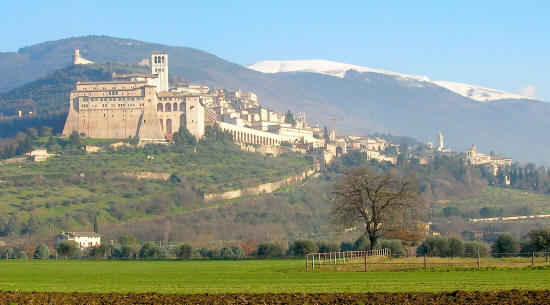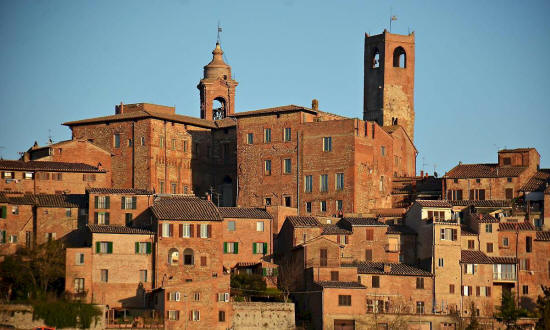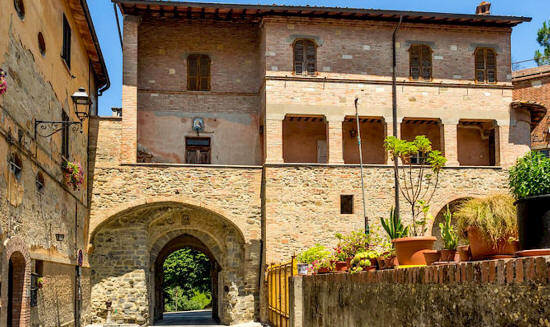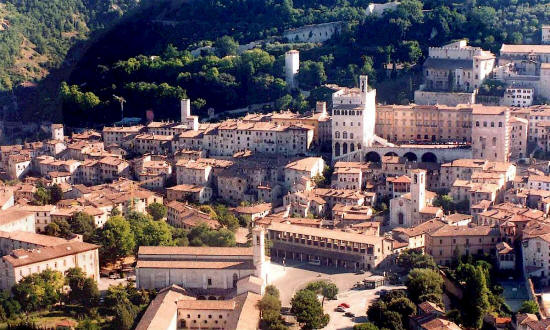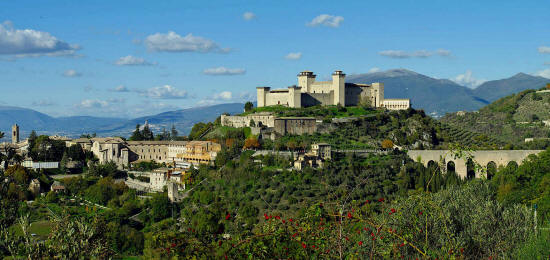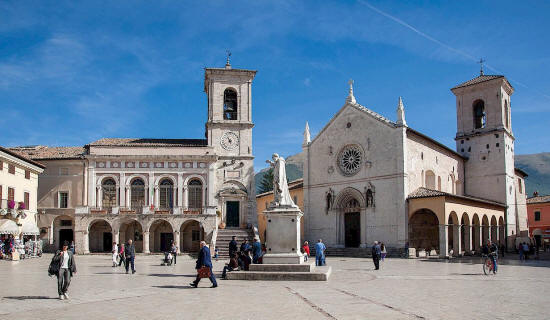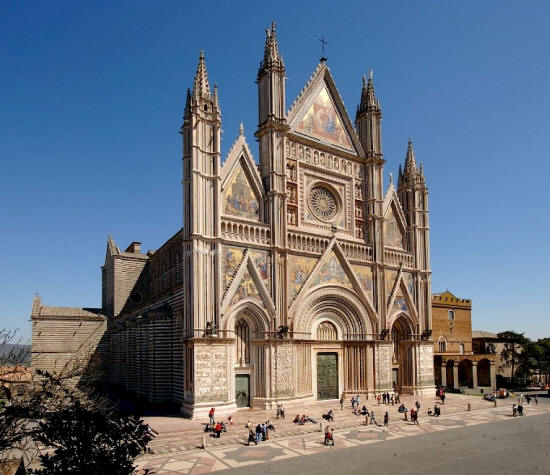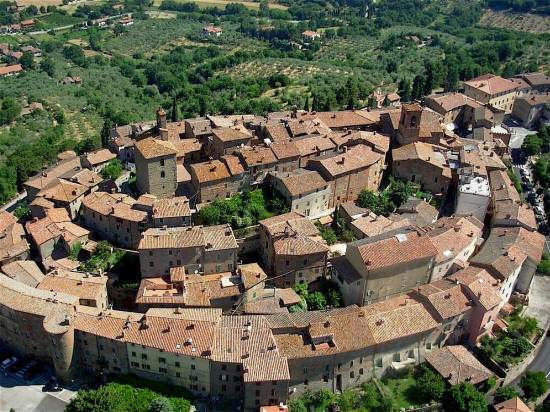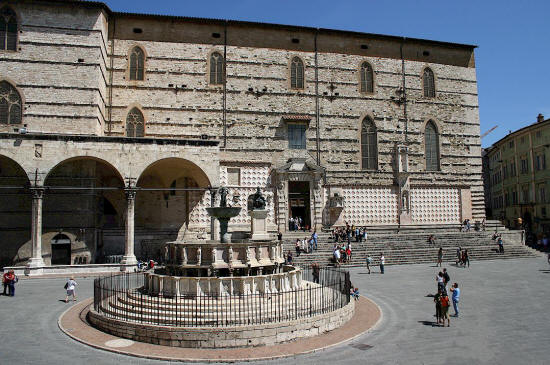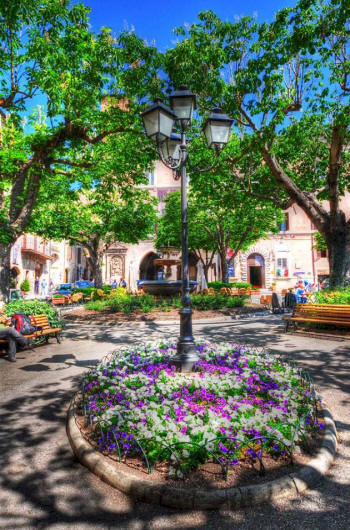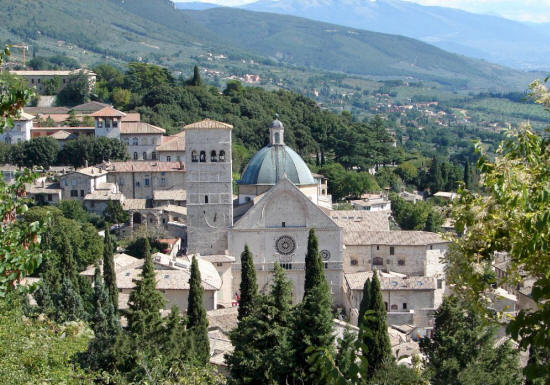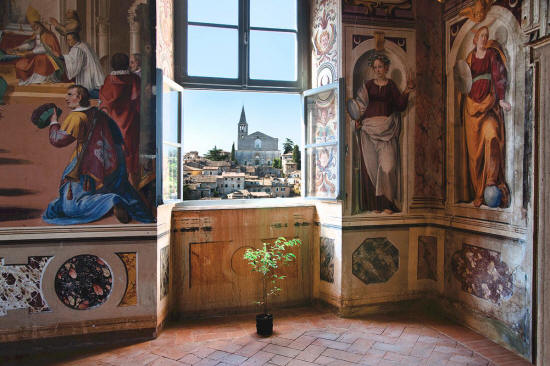Orvieto, Umbria
Orvieto is has been an inhabited city from at least the time of the Etruscans in the 9th century BC, making it one of the most ancient cities in Italy. Orvieto is located spectacularly on the flat top of a huge tufa massif in Umbria and its surroundings are famously home to some of the most important vineyards in Italy, producing an eminently quaffable white wine based on Procanico, Verdello, Drupeggio, Grechetto and Malvasia grapes. The most spectacular landmark of Orvieto is its magnificent cathedral. This duomo was built, beginning in 1285, in a gothic style peculiar to itself with a dramatically mosaicked facade and walls that are constructed of layers of light Travertine marble and dark basalt. The interior is intensively frescoed. While the cathedral is the dominent architectural wonder of Orvieto, there are several other interesting and beautiful churches and civic structures and museums, plus the famous St. Patrick's well which winds deeply down into the massif. Orvieto has also become famous for its restaurants. Orvieto is worth at the very least a full day of exploration.
